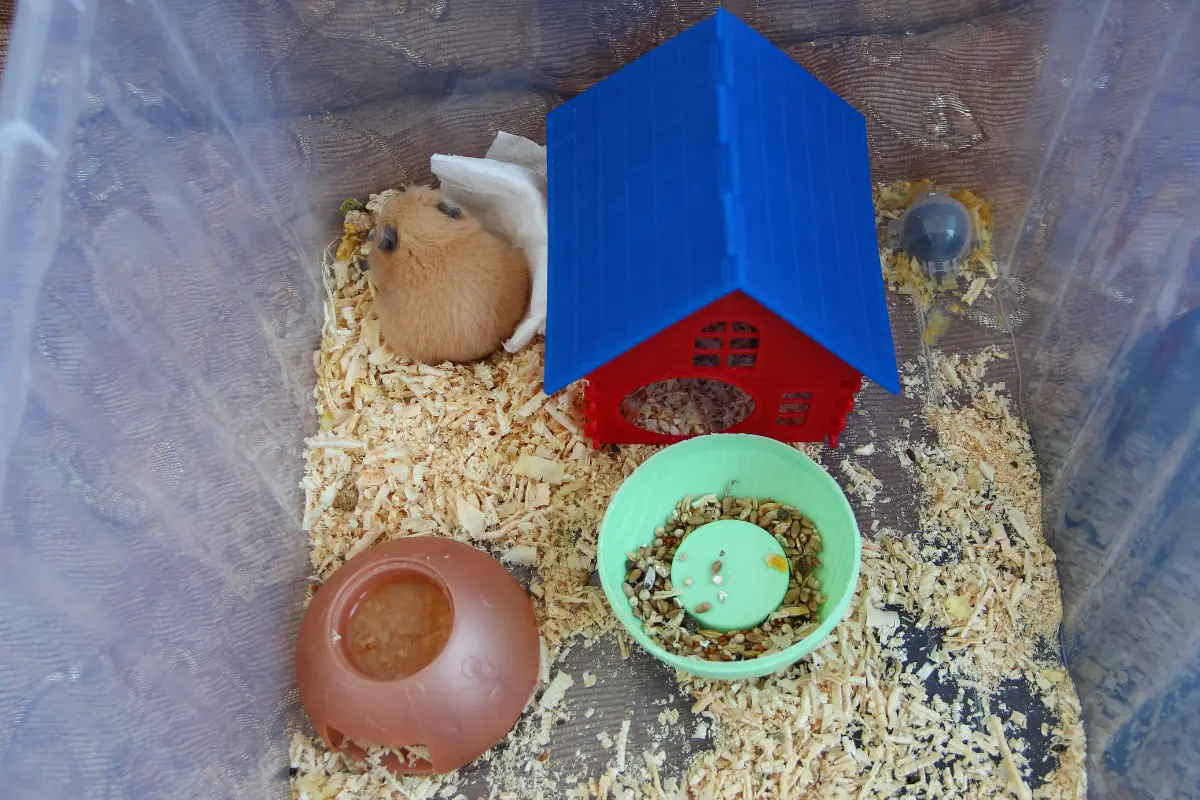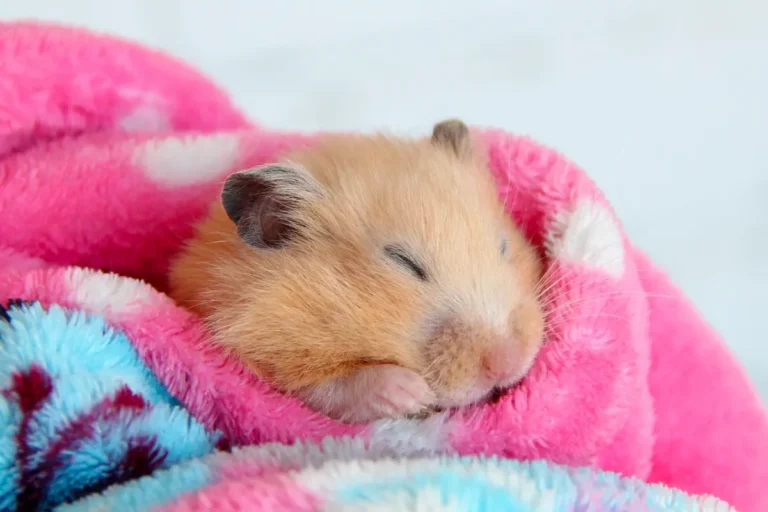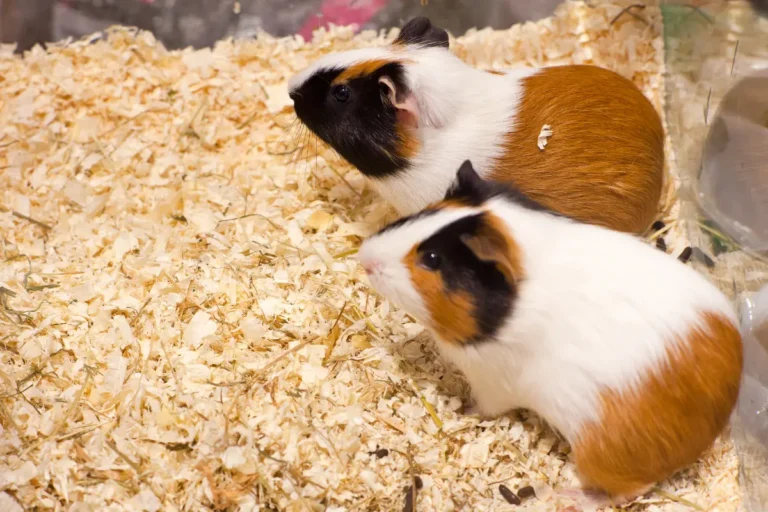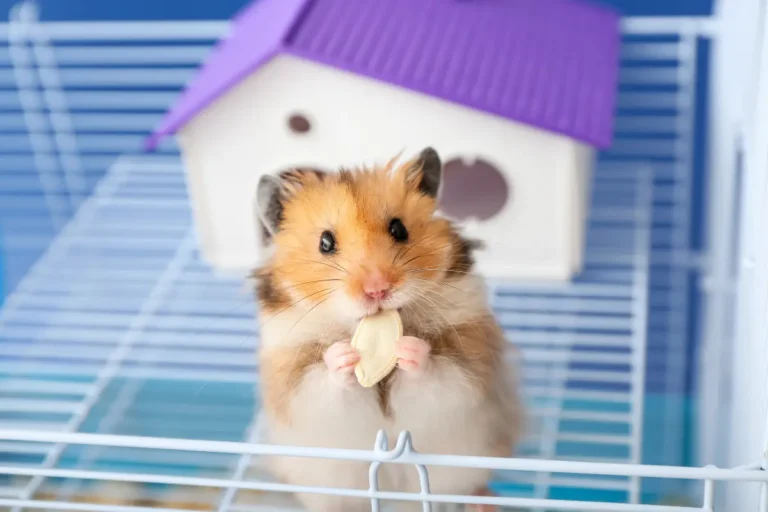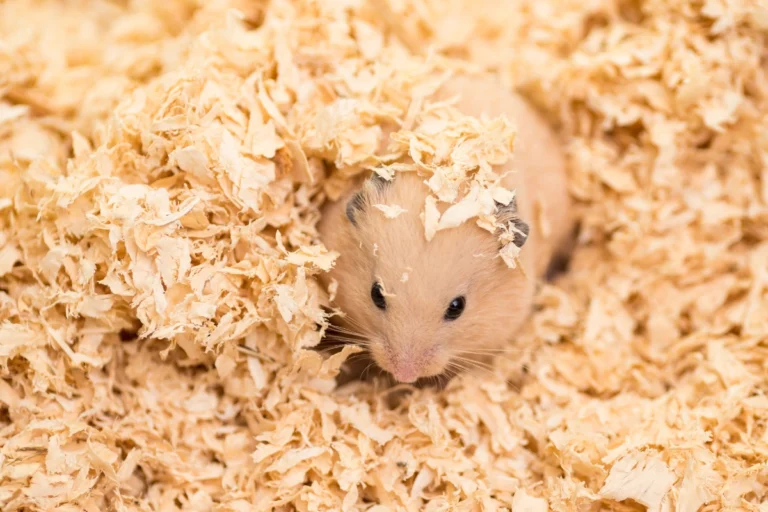How Often Should You Change Hamster Bedding? Frequency & Tips
Hamsters spend a significant portion of their time in their cage, so the cleanliness of their bedding is essential. Bedding serves multiple purposes: it absorbs waste, provides insulation, and offers a soft surface for your hamster to burrow into.
There are many types of bedding available for hamsters, including paper-based, aspen, and cotton-free bedding. Regardless of the type you choose, ensuring that the bedding is changed regularly is vital for your hamster’s health.
Why Clean Bedding Matters for Your Hamster
Keeping your hamster’s bedding clean is more than just about keeping the cage looking nice—it’s essential for their health and happiness. Here’s why fresh bedding matters:
- Hygiene: Over time, hamster bedding becomes soiled with urine, feces, and leftover food, leading to the growth of bacteria and potential unpleasant odors. Regularly changing the bedding helps reduce these risks and maintain a clean environment for your pet.
- Odor Control: Bedding materials, particularly those used for small animals like hamsters, can trap moisture and odors. Without regular changes, your hamster’s cage can become very smelly, which not only affects the pet but also the area around their cage.
- Comfort: Hamsters rely on their bedding for comfort. Soft, absorbent bedding helps to keep them warm and cozy, mimicking their natural environment. If the bedding becomes too wet or soiled, it can become uncomfortable or even harmful to your hamster’s health.
Recommended Frequency for Changing Hamster Bedding
As a general guideline, it’s advisable to change your hamster’s bedding at least once a week. This routine helps prevent the buildup of bacteria and odors, ensuring a hygienic living space for your pet.
Spot Cleaning Between Full Bedding Changes
While changing the bedding completely once a week is ideal, it’s also essential to spot-clean the cage regularly, especially if you notice areas where your hamster urinates or defecates more frequently.
Spot cleaning involves removing only the soiled bedding and replacing it with fresh bedding. This can be done on a daily or every-other-day basis, depending on how quickly the bedding becomes soiled.
Key areas to focus on during spot cleaning include:
- Food and Water: Any leftover food or spilled water should be cleaned up quickly to prevent it from becoming moldy or attracting pests.
- Urine and Feces: Hamsters often urinate in the same spot, usually in a corner of the cage or in their bedding. If you notice these areas becoming wet or dirty, it’s important to clean them immediately to avoid bacteria buildup.
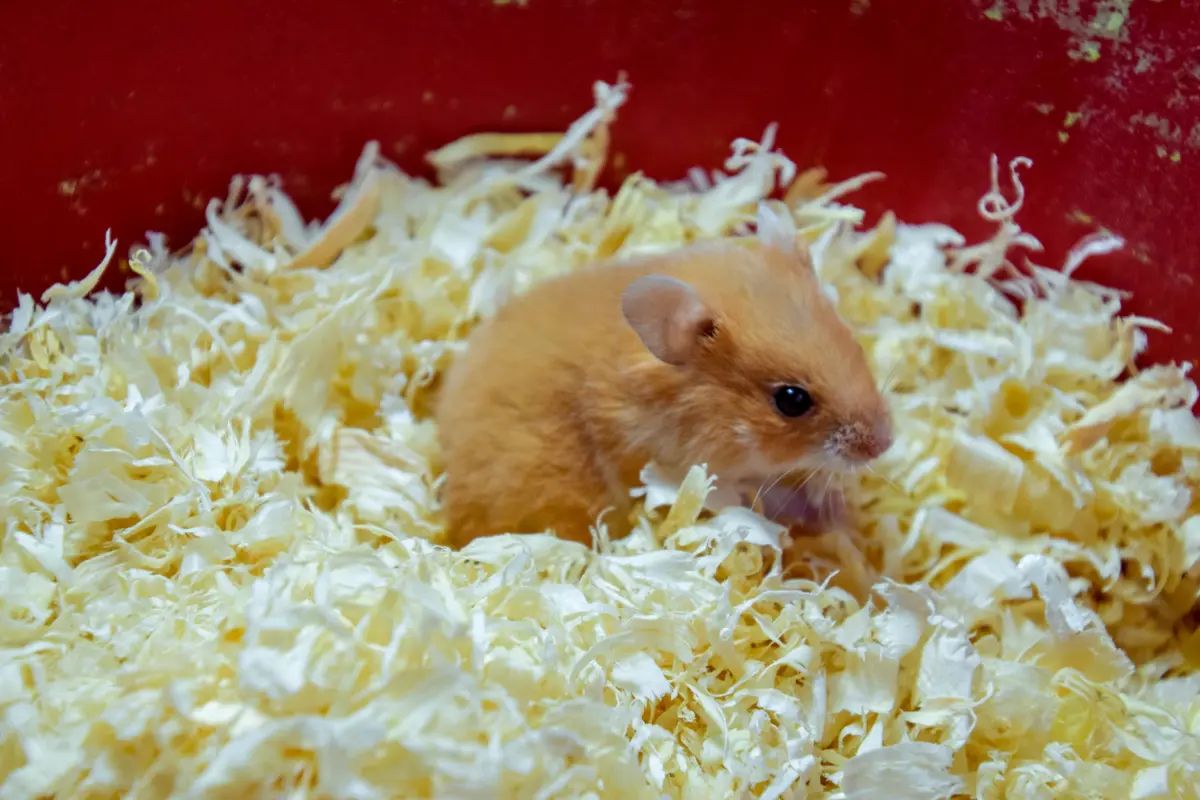
More Frequent Changes for Larger Cages or Multiple Hamsters
If you have a larger cage or more than one hamster, you may need to change the bedding more frequently.
A larger cage spreads out waste over a greater area, which can reduce how quickly the bedding gets soiled. However, more hamsters can create more waste, requiring more frequent bedding changes. In these cases, changing the bedding every 5–7 days is recommended.
After Illness or Injury
If your hamster has been sick or injured, it’s a good idea to change the bedding more often to ensure the environment stays clean and sanitary. This can help speed up recovery and prevent any secondary infections that might arise from contaminated bedding.
When Bedding Gets Wet or Damp
Hamster bedding can quickly absorb moisture from urine, leading to a soggy or damp environment. Damp bedding can harbor bacteria, mold, and unpleasant odors, so it’s important to replace it as soon as you notice it getting wet.
If your hamster’s bedding becomes damp before the usual bedding change is due, it’s best to replace it sooner rather than later.
Several other factors can affect how often you should change your hamster’s bedding:
- Size of the Cage: Larger cages may require less frequent bedding changes, as waste is spread over a greater area.
- Number of Hamsters: Multiple hamsters in a single cage can lead to quicker accumulation of waste, necessitating more frequent bedding changes.
- Type of Bedding Used: Some bedding materials are more absorbent than others. For instance, paper-based bedding often requires more frequent changes compared to aspen shavings.
- Hamster’s Activity Level: Active hamsters may soil their bedding more quickly, requiring more frequent changes.
Choosing the Right Bedding Material
Selecting the appropriate bedding is just as important as changing it regularly. Some materials are safer and more suitable for hamsters than others. One of the most popular and recommended options is aspen wood shavings. Avoid cedar or pine shavings, as they contain harmful phenols that can cause respiratory issues.
Here’s a quick guide:
| Bedding Type | Suitable for Hamsters? | Notes |
| Aspen Wood Shavings | Yes | Safe, absorbent, and good for burrowing |
| Carefresh Paper Bedding | Yes | Soft, absorbent, but may not be ideal for burrowing |
| Cedar or Pine Shavings | No | Contains harmful oils; avoid using |
| Cat Litter | No | Not safe for hamsters; can cause digestive issues if ingested |
Remember to choose a bedding material that is safe, absorbent, and comfortable for your hamster.
Step-by-Step Guide to Changing Your Hamster’s Bedding
Changing your hamster’s bedding is a simple process that helps maintain a clean and comfortable environment. Here’s a step-by-step guide to help you get the job done:
1. Remove Your Hamster
Before you begin, safely remove your hamster from their cage. Place them in a secure, hamster-proof area where they can’t escape or get into anything unsafe. This ensures they are safe while you clean their living space.
2. Dispose of Old Bedding
Carefully remove all the old bedding from the cage. Depending on the type of bedding you use, dispose of it accordingly. If it’s biodegradable or paper-based bedding, you can compost it. Other types should be thrown in the trash. Avoid flushing bedding down the toilet, as it can lead to clogged pipes.
3. Clean the Cage
After removing the old bedding, it’s time to clean the cage. Use warm water and mild soap to scrub all surfaces, paying special attention to corners where waste may have accumulated. Be thorough with your cleaning to ensure all areas are free from bacteria or leftover waste. Once you’re finished scrubbing, rinse the cage well to remove any soap residue, and then dry it completely before adding fresh bedding.
4. Add Fresh Bedding
Spread a fresh layer of bedding evenly across the bottom of the cage. The bedding should be deep enough to allow your hamster to burrow comfortably but not so deep that it restricts their movement. Make sure the bedding is spread evenly to avoid any uneven surfaces that might be uncomfortable for your pet.
5. Reintroduce Your Hamster
Once the cage is clean and the fresh bedding is in place, it’s time to return your hamster to their home. Ensure that their food, water, and any toys or hiding spots are placed back in the cage. This gives them the chance to settle in and enjoy their clean space immediately.
Additional Tips for Maintaining a Clean Hamster Cage
In addition to changing the bedding regularly, there are several other ways to ensure your hamster’s cage stays clean and hygienic.
- Clean the Cage Regularly
Besides changing the bedding, clean the entire cage every few weeks. This removes any dirt, food crumbs, and bacteria that may have built up. Use a hamster-safe cleaner or mild soap, and make sure everything is dry before adding fresh bedding.
- Provide Multiple Nesting Areas
Give your hamster more than one place to sleep or hide. This helps spread out their activities, so waste doesn’t build up in one area. It makes cleaning easier and keeps the cage cleaner.
- Use a Litter Box
Hamsters usually pick one spot to go to the bathroom. Place a small litter box in this area with bedding like paper or aspen shavings. It helps keep waste contained and makes spot cleaning much easier.
Monitoring for Signs of Odor and Contamination
Even if you’re sticking to a weekly bedding change schedule, it’s important to keep an eye on the condition of the bedding.
If you notice any foul smells or visible signs of contamination, such as mold, mildew, or bacteria, it may be necessary to change the bedding more frequently. Hamsters are particularly sensitive to strong odors and unclean environments, which can lead to health problems.
If the bedding appears damp or has a noticeable smell before your scheduled change, don’t hesitate to replace it sooner. A clean, dry environment is key to preventing respiratory issues, skin infections, and stress in your pet.
